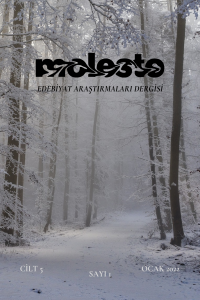THE TRACES OF GAIA IN THE GAVILAN: RECONSIDERATIONS FOR A PLANETARY LAND ETHIC IN THE ENCOUNTER OF AN ECOCRITIC AND AN ENVIRONMENTAL SCIENTIST
Cross-disciplinary collaboration has gained new ground in research environments. In this article, an ecocritic and an environmental scientist will focus on the Gavilan, in Sierra Madre Occidental, to reconsider Leopold’s holistic “land organism.” Aldo Leopold, in an essay he left unpublished in his lifetime (“Some Fundamentals of Conservation in the Southwest” 1923), had “sketched, ever so sparingly, the Gaia Hypothesis” (Callicott 2017), a living Earth. Leopold’s explorations, in the late 1930s, in Mexico’s Sierra Madre Occidental, in the Rio Gavilan watershed, may illuminate his idea of a living Earth, a “metabolism” and its “organs with coordinated functions.” The healthy ecosystem of the Gavilan impacted Leopold’s comparative research on land health in the subsequent years of his life; he proposed this wilderness area to be a “land laboratory,” a control region to assess the health of the lands—a task he gave to the future scientists by teaming up in an “international research enterprise.” The future research would reveal the mechanism of, in Leopold’s terms, “a biota still in perfect aboriginal health,” as well as its “capacity for self-renewal” (“land health”). As the Sierra Madre Occidental is unique in terms of atmospheric dust transfers from the major deserts of the world, feeding the lands from across the Atlantic and Pacific Oceans, Leopold’s proposal for a “research enterprise” will be meaningful in terms of Gaian science. The article will take up dust transfers to Sierra Madre Occidental as an exemplary case for a self-regulating Gaia in that the health of the land is maintained through interacting ecosystems. The authors will propose dust transfers and its wet deposition over the receiving bodies as the basis of land health. Research on this healthy ecosystem may finally inspire “the science of land health” that Leopold envisioned.
Anahtar Kelimeler:
Aldo Leopold, Gavilan, Land Ethic, Dust Transport, Land Health
- Yayın Aralığı: Yıllık
- Başlangıç: 2018
- Yayıncı: Bülent AYYILDIZ
